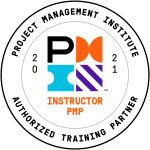The Certified Scrum Master (CSM) Certification Training provides a comprehensive overview of the Scrum framework for agile project management and will prepare you to become a certified Scrum Master.
Scrum is a framework for developing, delivering, and sustaining complex products. This Guide contains the definition of Scrum. This definition consists of Scrum’s roles, events, artifacts, and the rules that bind them together.
A framework within which people can address complex adaptive problems, while productively and creatively delivering products of the highest possible value.
Scrum is:
• Lightweight
• Simple to understand
• Difficult to master
Scrum is a process framework that has been used to manage work on complex products since the early 1990s. Scrum is not a process, technique, or definitive method. Rather, it is a framework within which you can employ various processes and techniques. Scrum makes clear the relative efficacy of your product management and work techniques so that you can continuously improve the product, the team, and the working environment.
The Scrum framework consists of Scrum Teams and their associated roles, events, artifacts, and rules. Each component within the framework serves a specific purpose and is essential to Scrum’s success and usage. The rules of Scrum bind together the roles, events, and artifacts, governing the relationships and interaction between them. The rules of Scrum are described throughout the body of this document.
Scrum was initially developed for managing and developing products. Starting in the early 1990s, Scrum has been used extensively, worldwide, to:
1. Research and identify viable markets, technologies, and product capabilities;
2. Develop products and enhancements;
3. Release products and enhancements, as frequently as many times per day;
4. Develop and sustain Cloud (online, secure, on-demand) and other operational environments for product use; and,
5. Sustain and renew products.
Scrum has been used to develop software, hardware, embedded software, networks of interacting function, autonomous vehicles, schools, government, marketing, managing the operation of organizations and almost everything we use in our daily lives, as individuals and societies. As technology, market, and environmental complexities and their interactions have rapidly increased; Scrum’s utility in dealing with complexity is proven daily.



